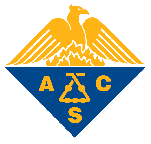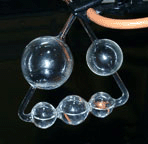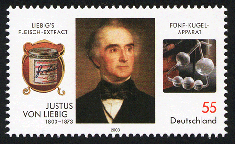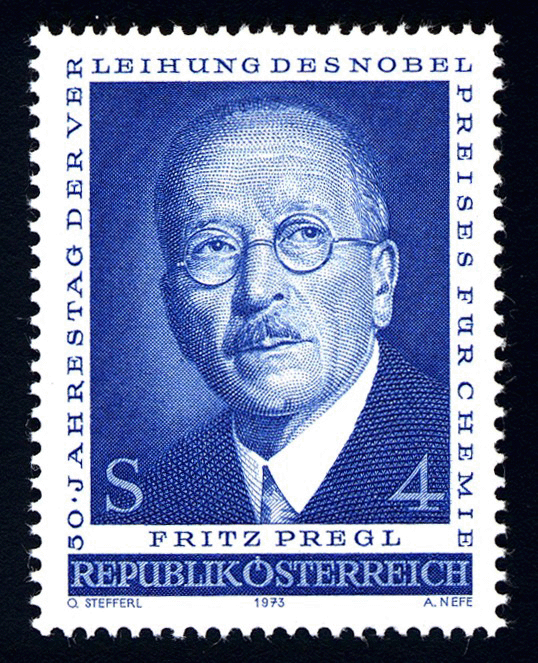American Chemical Society Logo
Recently an ACS member asked me about the meaning and history of the various symbols in the ACS logo. I turned to a long-time member of the ACS, Frank Walworth (Assistant Secretary for Governance Affairs) for help. He gave the following explanation, which was lightly edited from his email of April 23, 2019.
In response to the question about the "first" ACS logo. Contrary to what is posited in
http://www.acs-sacramento.org/what-is-that-the-symbols-in-the-acs-logo/ I have found no evidence in our files that ACS ever had a logo based specifically on the four triangles for Aristotle's elements. Perhaps the author conflates this with the logo for the Division of the History of Chemistry:

The ACS insignia (commonly referred to as a 'logo') dates back to 1908, when a special committee was appointed to consider a design. The committee solicited design suggestions from several companies, and one proposed by Tiffany & Co. was accepted, with some modifications. The logo was modified (with the Phoenix facing right as one views it), and stylized only once afterward, in 1987 (1).
| ACS logo, 1951 |
ACS logo, 2019 |
 |
 |
A brief description for the ACS insignia can be found in the ACS Constitution. Apparently, the description of the Society's insignia was not added to the Constitution until many years afterward -- probably sometime in the late 1930s to early 1940s. When the Society adopted its new constitution in 1948, the description was incorporated into Article I:
Article I, Section 3: The colors of the Society shall be cobalt blue and gold.
Article I, Section 4: The Society's insignia shall be square with one of the points forming the top and another the bottom of the emblem; the upper half of the square so placed, triangular in shape, shall contain the figure of a phoenix rising from the flame, typical of chemical activity and of the birth of new substance through the energy of chemical change; the lower half of the square shall contain the letters ACS and a small Liebig bulb.
The Liebig Kaliapparat (or five-bulb apparatus) appearing in the emblem's lower half was developed by German chemist Baron Justus von Liebig (1803-1873) to absorb carbon dioxide produced by the combustion of organic compounds (2, 3).
Kaliapparat (4)
Terabyte at German Wikipedia
[CC BY-SA 3.0
(http://creativecommons.org/licenses/by-sa/3.0/)] |
 |
In Liebig's Kaliapparat, the "Kali" refers to potassium (the K symbol is from
kalium) as the solutions in the bulbs were KOH. The design allowed the rapid and complete absorption of the CO
2 gas, whose mass could then be established by weighing the apparatus before and after combustion. The device was of tremendous importance to the development of organic chemistry as this gravimetric technique allowed much smaller organic samples to beanalyzed very accurately. The method remained in use essentially as Liebig described it until Fritz Pregl's (1869-1930) pioneering work on micro-analysis in the early years of the twentieth century. Liebig became well-known for his research on the benzoyl radical, fermentation, fertilizers, uric acid, and other compounds. Much of Liebig's laboratory has been preserved as a museum in Giessen, Germany. Incorporation of the Kaliapparat in the logo was suggested by J. L. Smith, one of the founders of the ACS who had been a Liebig student in 1842.
| Justus von Liebig |
Fritz Pregl |
 |
 |
(1) "ACS Logo Updated," Chem. Eng. News 1987, 65(12), 85.
(2) Liebig, Justus von "Ueber einen neuen Apparat zur Analyse organicher Korper, und die Zusammensetzung einiger organischen Substanzen," Annalen der Physik 1831, 21, 1-47. DOI: 10.1002/andp.18310970102.
(2) Liebig, Justus von Anleitung zur Analyse organischer Körper [Instruction for the Analysis of Organic Bodies], Braunschweig: Friedrich Vieweg und Sohn, 1837.
(4) "Liebig, Justus von." Complete Dictionary of Scientific Biography, vol. 8, Charles Scribner's Sons, 2008, pp. 329-350. Gale Virtual Reference Library, http://link.galegroup.com/apps/doc/CX2830902616/GVRL?u=uiuc_uc&sid=GVRL&xid=dada2986. Accessed 6 June 2019.
“Because of the unusually large molecular weights of the alkaloids, errors of the order of 1 percent in the determination of carbon could lead to incorrect empirical formulas. The solution, he [Liebig] thought, would be to make it possible to analyze larger amounts of the organic compound, just as he had done earlier for hydrogen. In order to achieve this, Liebig made a crucial technical innovation. In his apparatus the combustion gases passed through a tube containing calcium chloride, which absorbed the water vapor. Then they entered a tube bent into a triangle, with five bulbs blown into it. A caustic potash solution in this tube completely absorbed the carbonic acid. He could then simply weigh the increase in the weight of the tube and dispense with the collection of gases pneumatically for non-nitrogenous compounds. He could now analyze in one operation ten times the amount of organic compound as by the older methods. In addition he made a number of small refinements, resulting in a much simplified, reliable procedure that soon became standard. ”
Thanks to Dan Rabinovich for all images of stamps.
Some additional information:
Image of an ACS 75th Anniversary US Stamp showing left facing phoenix(
jpg) - 1951 (courtesy of Dan Rabinovich)
Image of a
souvenir card (or "maximum card" in philatelic parlance) prepared in 1951 on the day the ACS 75th anniversary stamp was issued, which shows the old ACS logo (courtesy of Dan Rabinovich)
Image of Liebig stamp and his kaliapparat (
pdf format;
ppt format) (courtesy of Dan Rabinovich)
Sara Everts,
"A Most Important Artifact," Chem. Eng. News 2015, 93(35), 46-47.
Trademark registrations show the right-facing phoenix was part of the trademark in 1978.
Melvyn C. Usselman, Christina Reinhart, Kelly Foulser, Alan J. Rocke
"Restaging Liebig: A Study in the Replication of Experiments," Annals of Science 2005, 62(1), 1-55. DOI: 10.1080/00033790410001711922
Andrea Sella
"Classic Kit: Liegbig's Kaliapparat," Chemistry World 2009, 6(9), 69.







